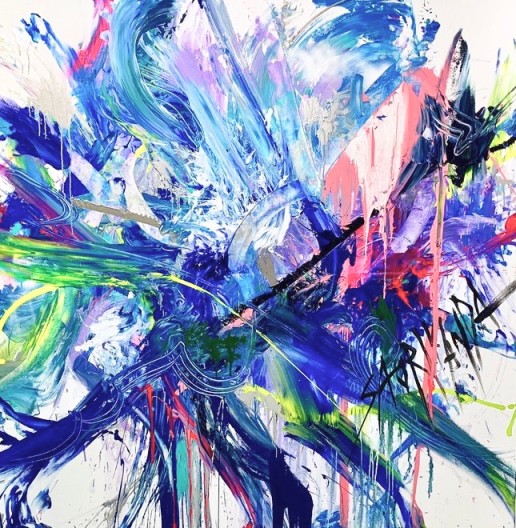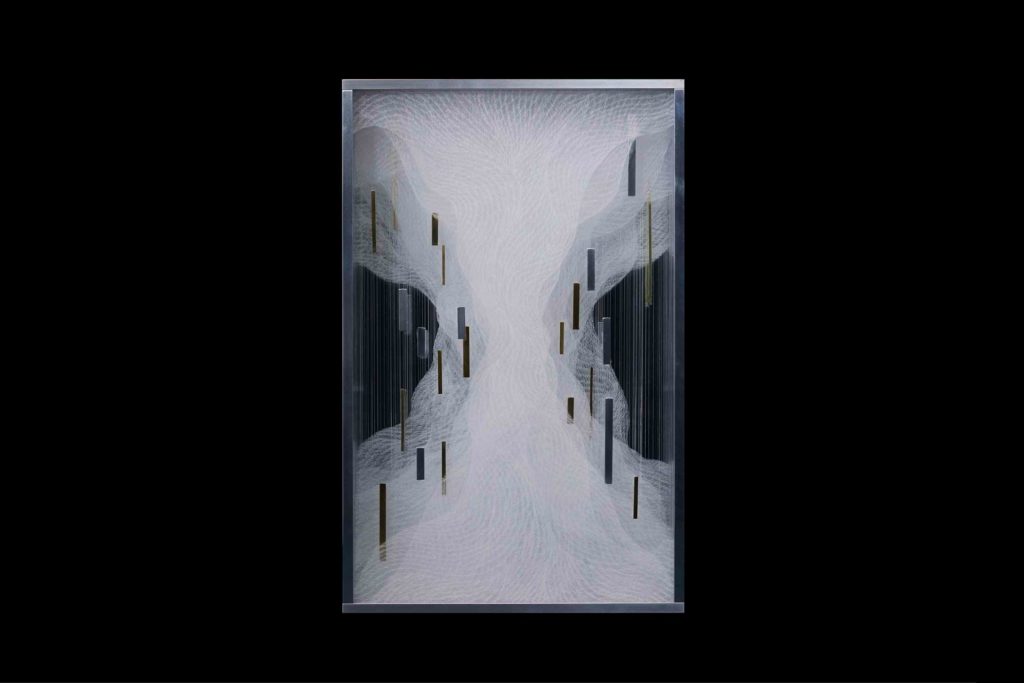It is not uncommon for people to have similar professions to their relatives. This is especially true for musicians and athletes, for whom there is a statistical correlation. As one would expect, there are a great many people who have artists as parents, and in many cases the influence of their parents' work can be seen.
However, even if your relatives are not artists, they can indirectly influence your creation. Sometimes they can be a source of motifs and inspiration. Often, they can be a catalyst for aspiring artists. So much so that the occupation of close relatives is an important part of an artist's creative process.
In this article, I would like to explore the relationship between these relatives' occupations and their works side by side.
Father: Trading company employee
Saori Kanda
When Kanda was a child, she spent time in Baghdad (Iraq) and Dubai (UAE) due to her father's work as a trading company employee. While living in foreign lands, she was exposed to the beauty of the world and the charm of Japan.
She calls herself a "dancing painter," and her art performance is based on the idea of painting by feeling the waves of music with her whole body. The body itself becomes a part of the painting and dances across the big screen. The brushstrokes that the artist creates dynamically have a life-like vitality, and are born and then disappear. Their cycle is like an ecosystem.
The work with physical expression is connected to the action painting lineage of Kazuo Shiraga and Jackson Pollock, but the performance that fills the space with lighting, music, dance, incense, costumes, hair and makeup, stage art, etc. is highly regarded as a unique performing art and is registered as a World Heritage/Okinawa It is also registered as a World Heritage Site/Okinawa Nakagusuku Site. She has also given dedication dance performances at Amagawadai-Benzai-Ten Shrine in Nara, Kibitsuhiko Shrine in Okayama, and in Taiwan, Shanghai, and Hong Kong. USA, Switzerland, France, Kazakhstan, India, Myanmar, Philippines, etc. She has also been invited to Japan.
Her travels around the world, absorbing the encounters with the people there, and energetically presenting her works as a dancer and painter, transcend the boundaries of country and race, but we can assume that her upbringing is closely related to her original experiences.

Click here to see more of Kanda's paintings.
https://www.tricera.net/artist/8100114
Father: Blacksmith
Hiroko Tokunaga
The presence of a blacksmith, a form of "monozukuri," in her childhood seems to have shaped Tokunaga's unique attitude toward creation. When she was in college, she majored in oil painting, but after exploring the possibility of expressing herself through "making things" rather than "painting," she found a way to carve out acrylic sheets. This is as far as she has gotten. Her current work has a contemporary "high" vibe to it, but at the same time it is more than art. In addition, it gives us a sense of a more fundamental act: making things.
Maybe it's because I know her parents are blacksmiths, but I can't help but feel that blacksmiths and Tokunaga's works and creations have something in common. From a distance, her works look very modern and neat, but at the same time, they seem impersonal and even cold. They are like iron products that have just been forged and finished by a blacksmith.
However, the cut out dots and lines have a different look when viewed up close. The work is incredibly delicate, yet one can see the traces of human skill with certainty. The warmth of these works seems to reflect the spirit of craftsmanship inherent in the family business of blacksmithing, which has been passed down from generation to generation. There is. By looking at the "accumulation" of dots and lines, the viewer "perceives" all the sensations of her transition from art to "making things," and the "connection" of dots and lines acquired through this transition, which she experienced in her brush "accumulation" during her college days.

Click here for other works by Hiroko Tokunaga
https://www.tricera.net/artist/8100373
Sister: Apparel businessman
Shimpei Ishikawa
Ishikawa's older sister was a fashion student, so fashion magazines were close at hand when she was an adolescent. The models she saw on the magazine runways were symmetrical. Artistic models must have tugged at Ishikawa's heartstrings as an artist. After that, the model-like figure began to appear in his motifs, and even now, Ishikawa's interest in models is high. This is connected to the basis of his work, which is to "feel and imagine.
He often covers the model's face and body with clothes to transform it into a form different from the original human body. This has been done. The artificial act of putting on clothes transforms them into "made" parts, like dolls. However, the legs used to walk the runway are, so to speak, part of the original human form, "made or unmade. The coexistence of these two elements shakes the viewer's vague yet vivid sense of "feeling and imagining. The coexistence of these two parts shakes the viewer's vague but vivid sense of "feeling and imagination. Because of the "made" part, there is a kind of blankness in the "made or unknown" part. In this way, we, the viewers of the models, are encouraged to use our imagination.
Ishikawa reproduces exactly the same thing in his work. The artificially manipulated form of the work and the unconscious image of the viewer coexist and interact with each other. His works, which are completed by doing, are by their nature like a creative process. He creates his works on the premise that there is a person inside, deliberately leaving room for the viewer's imagination. He holds a hand. The viewer is consciously aware of the "made" part of the work with the hand and the "made or unknown" part of the work without the hand. The interactional relationship with the work is bounded by back and forth. Not only that, but it will make us reconsider what consciousness is.
For Ishikawa, the act of carving a person from blocks of wood and the structure of a clothed person are natural elements in his work. It is a knot, a seemingly strange act for us. However, the mental function of "feeling and creating" may be hidden in our daily lives, in fashion models and in unexpected ways.

Click here for more works by Shimpei Ishikawa
https://www.tricera.net/artist/8100381